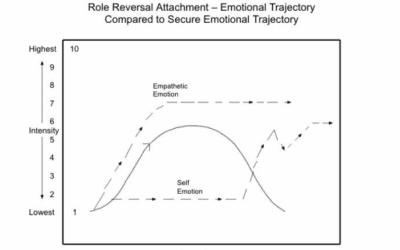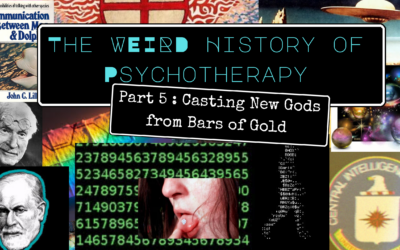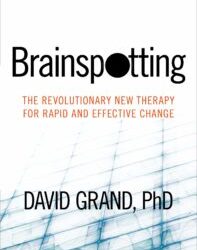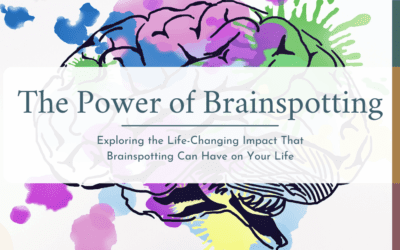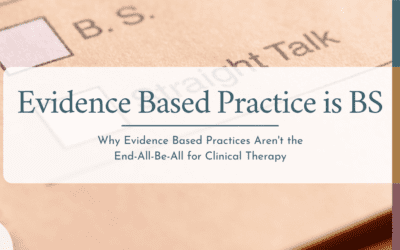Postpartum Depression: Understanding the Symptoms and Finding Support Bringing a child into the world is a life-altering experience, filled with moments of profound joy and, just as often, overwhelming challenges. It’s common to hear about the "baby blues"—periods of sadness, weepiness, or anxiety in the first couple of weeks after birth. But for many new parents, these feelings don't fade. They may intensify, becoming a heavy, persistent fog that makes it difficult to care for yourself or your new baby....
Brainspotting Resources: The Revolutionary Therapy Transforming Trauma Treatment

What is Brainspotting? Understanding This Groundbreaking Approach
Brainspotting is a powerful, focused treatment method that works by identifying, processing, and releasing neurophysiological sources of emotional pain, trauma, and dissociation. Brainspotting therapy is a type of alternative therapy that uses spots in a person’s visual field to help them process trauma. It accesses trauma trapped in the subcortical brain, the area of the brain responsible for motion, consciousness, emotions, and learning. This revolutionary approach was discovered in 2003 by David Grand, PhD, as an advancement of his work in Eye Movement Desensitization and Reprocessing (EMDR) therapy.
At Taproot Therapy Collective in Birmingham, Alabama, we are pioneering the use of brainspotting in the Southeast. All of our therapists are trained in Brainspotting, making us the most comprehensive brainspotting practice in Alabama. We were among the first to bring this innovative therapy to the Birmingham area, and our clinicians have completed advanced Phase 2 training, providing you with the highest level of expertise available.
The Science Behind Brainspotting: How “Where You Look Affects How You Feel”
Neurobiological Foundations
Brainspotting is based on the fundamental principle that “where you look affects how you feel.” During a brainspotting session, the therapist guides the client to focus on a specific eye position, known as a brainspot, while simultaneously processing a traumatic memory or disturbing emotion. This process helps to access and release trauma that is held in the deeper, non-verbal regions of the brain, such as the limbic system and brainstem.
Brainspotting works on the midbrain, which controls parts of the central nervous system that are responsible for processes such as vision, hearing, sleep, and motor control. When trauma occurs, this part of the brain typically goes into freeze mode to conserve resources for the body to be in defense mode.
The approach accesses what Grand describes as “frozen maladaptive homeostasis”—a state where the body’s natural self-healing processes have become stuck due to trauma. By accessing specific eye positions that correlate with these stored traumas, brainspotting helps restore the brain’s natural processing capabilities.
The Subcortical Connection
Understanding the body-brain connection is crucial to appreciating why brainspotting is so effective. Traumatic experiences become encoded in subcortical brain regions that operate below conscious awareness. Traditional talk therapy often cannot access these deeper brain areas where trauma is stored, which is why many people can understand their trauma intellectually but still feel stuck emotionally and physically.
Brainspotting bypasses the conscious, neocortical thinking brain and works directly with the subcortical areas where trauma is actually held. This explains why clients often experience profound shifts that go beyond what traditional cognitive approaches can achieve.
Latest Research on Brainspotting Effectiveness
Comparative Studies and Outcomes
Recent research is beginning to validate what clinicians have observed for years about brainspotting’s effectiveness. Our results indicate that Brainspotting seems to be an effective alternative therapeutic approach for clients who experienced a traumatic event and/or with PTSD. Studies comparing brainspotting to other established treatments show promising results.
A small (N = 53) trial demonstrated that just three BSP sessions were as effective as EDMR in treating PTSD symptoms (EMDR typically averages 8–12 sessions). Emerging data also suggests that BSP might be better tolerated by patients, easier for therapists to learn, and more easily integrated into other forms of trauma therapy owing to its flexibility and relatively short duration.
Unique Advantages Over Other Modalities
One of the purported benefits of Brainspotting therapy over EMDR is that one does not need to “relive” the trauma in order to facilitate its release from the body. This makes brainspotting particularly accessible for clients who have found other trauma therapies too overwhelming or retraumatizing.
Although research remains scant on this modality, one study found Brainspotting to be more effective than either EMDR or CBT—and patients even continued to get better following their treatment being over. All other modalities showed patients’ symptoms returning at the 6-month follow-up.
Comprehensive Brainspotting Resources for Healing
What Conditions Can Brainspotting Treat?
Brainspotting therapy is effective for a wide range of conditions including:
Trauma and PTSD: Complex trauma, childhood abuse, sexual assault, combat trauma, medical trauma, and accident-related trauma
Anxiety Disorders: Generalized anxiety, panic attacks, social anxiety, and performance anxiety
Depression: Major depression, treatment-resistant depression, and trauma-related depression
Addiction and Substance Abuse: Addressing underlying trauma that often drives addictive behaviors
Chronic Pain: Psychologically-induced physical pain and trauma-related somatic symptoms
Attachment Issues: Developmental trauma and relational wounds
Performance Enhancement: Sports performance, creative blocks, and professional development
Dissociative Disorders: Dissociation and fragmentation from trauma
The Brainspotting Process: What to Expect
Initial Assessment and Preparation
Your first brainspotting session at Taproot Therapy Collective begins with a thorough assessment. During your first brainspotting session, the therapist will take some time to get to know you and your reasons for seeking therapy. You might not get to the actual brainspotting technique during the first session.
Our therapists prioritize building a strong therapeutic relationship and ensuring you feel safe and prepared for the brainspotting process. This initial phase is crucial for successful outcomes.
The Brainspotting Session
When you begin a brainspotting session, the therapist may play bilateral sound music. This music moves from one ear to the other when you listen to it with headphones. They may also lead you through a guided relaxation technique.
In a BSP session, a therapist holds a pointer and guides the client’s eyes across a field of vision while the client discloses a particular event. The “brainspot” is a certain visual point at which the client has a strong emotional reaction while bringing up a traumatic memory or triggering uncomfortable somatic responses.
Dual Attunement: The Therapeutic Relationship
There is some evidence that brainspotting works primarily on the limbic system, a collection of brain structures that play a role in emotion, long-term memory, cognition, motivation, impulse control, and several other psychological factors that can affect mental health. While a therapist may attempt to access both the physical and emotional “locations” of negative emotions, brainspotting therapists use something called “dual attunement,” a process through which the therapist simultaneously attunes to the therapeutic relationship as well as the brain-body response of the person in therapy.
Advanced Brainspotting Techniques and Applications
Inside Window vs. Outside Window
Brainspotting utilizes two primary approaches:
Inside Window: Working with eye positions that activate the trauma while keeping the client within their window of tolerance Outside Window: Using calming eye positions to help regulate the nervous system and build resources
Our Phase 2 trained therapists are skilled in determining which approach is most appropriate for each client and situation.
Integration with Other Modalities
Brainspotting works exceptionally well in combination with other therapeutic approaches offered at Taproot Therapy Collective:
- EMDR therapy: Complementary bilateral stimulation approaches
- Somatic Experiencing: Body-based trauma release
- Internal Family Systems (IFS): Working with different parts of the self
- Emotional Transformation Therapy (ETT): Light and color therapy
- QEEG Brain Mapping: Neurobiological assessment and intervention
Professional Training and Certification Resources
Brainspotting Training Levels
Phase 1 Training: Basic brainspotting principles and techniques Phase 2 Training: Advanced applications and specialized populations Continuing Education: Ongoing skill development and certification maintenance
Professional Organizations and Resources
Brainspotting International: The official organization for brainspotting training and certification Research and Case Studies: Current research findings and clinical evidence Clinical Guidelines: Best practices for brainspotting implementation
National and International Brainspotting Resources
Research and Evidence Base
The growing body of brainspotting research includes studies on:
- PTSD treatment effectiveness
- Anxiety and depression outcomes
- Chronic pain management
- Addiction recovery
- Performance enhancement
- Neurobiological changes
Educational Resources
Academic Articles: Peer-reviewed studies on brainspotting effectiveness Training Videos: Educational content for professionals and clients Case Studies: Real-world applications and outcomes Conference Presentations: Latest developments in brainspotting research and practice
Self-Care and Preparation Resources
Preparing for Brainspotting Therapy
Physical Preparation: Ensuring adequate rest, nutrition, and hydration Emotional Preparation: Setting intentions and creating safety plans Post-Session Care: Integration activities and self-care practices
Supporting Your Healing Journey
Meditation and Mindfulness: Complementary practices for nervous system regulation Somatic Resources: Body-based self-care techniques Community Support: Building healing relationships and environments
Brainspotting for Specific Populations
Trauma Survivors
Brainspotting is particularly effective for survivors of:
- Childhood abuse and neglect
- Sexual assault and domestic violence
- Combat and military trauma
- Medical trauma and procedures
- Natural disasters and accidents
Creative Professionals
Many artists, musicians, writers, and performers use brainspotting for:
- Creative blocks and performance anxiety
- Processing difficult emotions through art
- Enhancing creative flow and inspiration
- Managing the emotional intensity of creative work
Athletes and Performers
Brainspotting applications in performance enhancement include:
- Sports performance optimization
- Competition anxiety management
- Injury recovery and trauma
- Mental resilience building
Integration with Holistic Healing Approaches
Mind-Body Integration
Understanding how trauma affects both mind and body is essential for comprehensive healing. Brainspotting works particularly well when combined with:
Breathwork: Nervous system regulation through conscious breathing Yoga and Movement: Embodied practices for trauma integration Nutrition and Lifestyle: Supporting brain health and nervous system function Nature-Based Healing: Environmental factors in trauma recovery
Spiritual and Existential Dimensions
Depth psychology approaches recognize that trauma healing often involves spiritual and existential dimensions. Brainspotting can help access:
- Spiritual bypassing and authentic spiritual development
- Existential meaning and purpose after trauma
- Connection to transcendent experiences
- Integration of mystical and spiritual experiences
The Future of Brainspotting Research and Development
Emerging Applications
Current research is exploring brainspotting applications for:
- Neurodevelopmental conditions
- Chronic illness and autoimmune conditions
- Addiction and substance abuse
- Couples and family therapy
- Organizational and workplace trauma
Technological Integration
BrainspottingTM (BSP) therapy, developed by David Grand in 2003, may be a particularly promising improvement of EMDR. Future developments may include:
- Virtual reality applications
- Biofeedback integration
- Heart rate variability monitoring
- EEG and neuroimaging research
Getting Started with Brainspotting at Taproot Therapy Collective
Choosing the Right Therapist
All of our therapists at Taproot Therapy Collective are trained in brainspotting, but each brings unique specializations and approaches. Consider factors such as:
- Specific trauma experiences or conditions
- Cultural and identity considerations
- Therapeutic relationship preferences
- Integration with other treatment modalities
Initial Consultation Process
Assessment: Comprehensive evaluation of your needs and goals Treatment Planning: Collaborative development of your healing journey Preparation: Ensuring readiness and safety for brainspotting work Integration: Planning for long-term healing and growth
Insurance and Accessibility
We accept various insurance plans and work to make brainspotting accessible to our Birmingham community. Our team can help you understand coverage options and explore financial assistance when needed.
Teletherapy Options
Brainspotting can be effectively conducted via teletherapy, making this powerful treatment accessible throughout Alabama. Our secure, HIPAA-compliant platform ensures privacy while maintaining therapeutic effectiveness.
Beyond Symptom Relief: Transformation and Growth
Post-Traumatic Growth
Brainspotting often facilitates post-traumatic growth, leading to:
- Enhanced emotional resilience
- Deeper self-awareness and authenticity
- Improved relationships and intimacy
- Spiritual development and meaning-making
- Creative expression and inspiration
Long-Term Integration
The benefits of brainspotting often continue long after sessions end. Many clients report:
- Continued processing and integration
- Increased self-regulation abilities
- Greater access to intuition and inner wisdom
- Enhanced capacity for joy and aliveness
Community Resources and Support
Birmingham Area Resources
Support Groups: Local trauma recovery groups and communities Educational Workshops: Ongoing learning opportunities about trauma and healing Professional Development: Training opportunities for mental health professionals Community Events: Healing-focused gatherings and presentations
Online Resources and Communities
Professional Forums: Connecting with trained brainspotting therapists Client Support Groups: Peer support for those experiencing brainspotting Educational Webinars: Ongoing learning about trauma and healing Research Updates: Latest findings in brainspotting research
Clinical Excellence and Safety Standards
Ethical Practice Guidelines
Our brainspotting practice adheres to the highest ethical standards:
- Informed consent and client autonomy
- Cultural sensitivity and inclusion
- Trauma-informed care principles
- Professional boundaries and safety
- Ongoing supervision and consultation
Quality Assurance
Continuing Education: Regular training and skill development Supervision: Ongoing clinical consultation and support Outcome Monitoring: Tracking progress and adjusting treatment Safety Protocols: Ensuring client wellbeing throughout treatment
The Science of Healing: Research-Based Hope
Neuroplasticity and Recovery
Modern neuroscience shows us that the brain maintains the capacity for healing and change throughout life. Brainspotting works with these natural healing processes to:
- Reorganize neural networks
- Release stored trauma energy
- Restore natural self-regulation
- Enhance resilience and adaptability
Evidence-Based Optimism
While brainspotting is a relatively new approach, the growing research base provides reason for hope. Initial studies have shown promising results. For instance, a pilot study reported improvements in psychological functioning and quality of life among participants undergoing brainspotting.
Your Journey Begins Here
Brainspotting offers a unique pathway to healing that honors both the complexity of trauma and the innate wisdom of the human system. At Taproot Therapy Collective, we’re committed to providing you with the highest quality brainspotting therapy available in Birmingham and throughout Alabama.
Whether you’re struggling with trauma, anxiety, depression, or seeking to unlock your full potential, brainspotting may offer the breakthrough you’ve been seeking. Our experienced, Phase 2 trained therapists are here to guide you on this transformative journey.
Ready to experience the healing power of brainspotting?
📍 Location: 2025 Shady Crest Dr. Suite 203, Hoover, AL 35216
📞 Phone: (205) 598-6471
🌐 Website: GetTherapyBirmingham.com
📧 Contact: Schedule your consultation online
Serving Birmingham, Vestavia Hills, Hoover, Mountain Brook, Homewood, and all of Alabama through secure teletherapy services.
Additional Resources for Continued Learning
Books and Publications:
- “Brainspotting: The Revolutionary New Therapy for Rapid and Effective Change” by David Grand, PhD
- Clinical research articles and case studies
- Professional training manuals and guidelines
Online Learning:
- Taproot Therapy Collective Blog
- Podcast episodes on trauma and healing
- Professional webinars and conferences
Professional Organizations:
- Brainspotting International
- International Society for the Study of Trauma and Dissociation
- National Center for PTSD
The journey of healing is unique for each person, but you don’t have to walk it alone. With brainspotting and the support of skilled, compassionate therapists, profound transformation is possible. Contact Taproot Therapy Collective today to begin your journey toward healing, growth, and authentic self-expression.
Navigating the Echoes of Trauma: A Comprehensive Guide to Understanding and Healing from Complex PTSD (C-PTSD)
Brainspotting in Alabama: Revolutionary Trauma Therapy for Deep Healing, Mental Health and Trauma Therapy in Alabama, Therapy Resources for Alabama
When Trauma Is Not a Single Event For many, the word "trauma" conjures images of a single, devastating event: a car accident, a natural disaster, a combat experience. While these are undoubtedly traumatic, there is another form of suffering, one that is often less visible but profoundly damaging. It is the trauma that unfolds not in a single moment, but over months, years, or even a lifetime. This is the trauma of being trapped in a situation of ongoing abuse, neglect, or captivity, where the threat is not an...
Brainspotting vs. EMDR: Which Is Right for My Trauma?
Brainspotting in Alabama: Revolutionary Trauma Therapy for Deep Healing
This article was written by the clinical team at Taproot Therapy Collective in Birmingham, AL. We are a group of specialized therapists dedicated to providing the most advanced, effective, and neuroscientifically-backed treatments for trauma, anxiety, and depression.
Attachment, Emotional Arcs, and Somatic Approaches: From Mary Main’s Revolutionary Research to Contemporary Therapeutic Integration
Brainspotting in Alabama: Revolutionary Trauma Therapy for Deep Healing, Evidence Based Practice and Research Psychology, Mental Health and Psychotherapy Resources in Alabama, Mental Health and Trauma Therapy in Alabama, Therapy Resources for Alabama
Mary Main's Groundbreaking Attachment Research Mary Main (1943-2023) transformed our understanding of attachment through her revolutionary contributions to developmental psychology and attachment research. As a protégé of Mary Ainsworth at Johns Hopkins University, Main expanded attachment theory beyond its original three categories by discovering a fourth pattern known as disorganized/disoriented attachment and developing the Adult Attachment Interview (AAI) to assess attachment representations across...
Coping with the Loss of a Beloved Pet
Brainspotting in Alabama: Revolutionary Trauma Therapy for Deep Healing, Mental Health and Psychotherapy Resources in Alabama, Mental Health and Trauma Therapy in Alabama, Therapy Resources for Alabama
Grief, Healing, and Brainspotting for the Loss of a Pet The bond between humans and their animal companions is a powerful one. Pets provide us with unconditional love, emotional support, and constant companionship. They are a source of joy, laughter, and comfort. So when a beloved pet dies, it's no surprise that their loss can be devastating. Grief over the loss of a pet is often minimized or misunderstood by others. Some may not understand the depth of the bond you shared with your animal friend. "It's just a...
Beyond PTSD: Rethinking Trauma Diagnosis Through Memory Systems and Targeted Treatment
Brainspotting in Alabama: Revolutionary Trauma Therapy for Deep Healing, Executive and Physician Burnout, Phenomenology and Existential Psychology, Psychology Topics and Articles, Recovering from Abuse, Somatic Experiencing In Alabama
The Limitations of Current Trauma Diagnosis Leading trauma experts Gabor Maté and Bessel van der Kolk have long argued that the DSM-5's approach to trauma diagnosis fails to capture the complexity of how trauma manifests in different memory systems and psychological processes. As van der Kolk notes in "The Body Keeps the Score," trauma isn't a singular experience but rather a constellation of disruptions across multiple domains of functioning. Similarly, Maté emphasizes in his work on trauma and addiction...
Is EMDR Pseudoscience? Is EMDR Evidence Based?
Brainspotting in Alabama: Revolutionary Trauma Therapy for Deep Healing, Evidence Based Practice in Therapy, Executive and Physician Burnout, Psychology Topics and Articles
The Complex Reality of EMDR in Clinical Practice Eye Movement Desensitization and Reprocessing (EMDR) occupies a unique and controversial position in the landscape of trauma therapy. While some practitioners report remarkable results, researchers often express skepticism about its mechanisms calling it a purple hat therapy and effectiveness. This divide between clinical experience and research findings reveals important truths about how we understand and treat trauma. Understanding EMDR's Mixed Reception EMDR...
The Weird History of Psychotherapy Part 5: The Perennial Philosophy
Brainspotting in Alabama: Revolutionary Trauma Therapy for Deep Healing, History of Psychotherapy
Socrates and the Daimon: The Ancient Shamanic Function Athens, 399 BCE. Socrates holds a cup of hemlock—poison that will kill him if he drinks it. His students beg him to flee; the guards would look the other way. He could escape to Thessaly and continue teaching. Instead, he drinks. Not because he's suicidal or defeated, but to prove something that can't be proven any other way: the daimon is real. The inner voice that had guided him all his life—the thing that tells him when he's about to make a mistake, the...
What is a “Purple Hat Therapy”?
Brainspotting in Alabama: Revolutionary Trauma Therapy for Deep Healing, Color Psychology, Evidence Based Practice in Therapy, Psychology
Purple Hat Therapy and the Evolution of Alternative: Psychotherapies From Energy Meridians to Polyvagal Stimulation Purple hat therapy, a novel approach claiming to heal through the power of colored headwear, has recently gained attention in the alternative therapy world. While its proponents assert that purple hats synchronize neural activity between brain hemispheres, this explanation lacks scientific evidence. However, purple hat therapy is not the first unconventional treatment to emerge in the history of...
Reclaiming the Soul of Psychology: Recentering the Study of Consciousness in Psychotherapy
Brainspotting in Alabama: Revolutionary Trauma Therapy for Deep Healing, Jungian Therapy and Depth Psychology, Phenomenology and Existential Psychology, Philosophy for Therapists, Psychology Topics and Articles
Psychology, as a field, stands at a critical juncture. Over the past few decades, the focus has shifted away from the fundamental nature of human consciousness and towards a more mechanistic, symptom-focused approach to mental health. Manualized therapies, diagnostic checklists, and a preoccupation with "evidence-based" practices have come to dominate the landscape, threatening to reduce the rich tapestry of human experience to a set of computerized algorithms. As a graduate student, I remember feeling a deep...
Transforming Anxiety Through Embodied Mindfulness: A Guided Meditation
Brainspotting in Alabama: Revolutionary Trauma Therapy for Deep Healing, Discover + Heal + Grow: Taproot Therapy Collective Podcast Episodes, Guided Meditations for Therapy
If you struggle with anxiety, panic, or trauma, you know how easily the mind can get hijacked by worries about the future or regrets about the past. Mindfulness offers a powerful pathway back to the safety and stability of the present moment. This grounding meditation will guide you to reconnect with your body and breath, restoring a sense of calm and presence. Settling the Body Begin by finding a posture that allows your body to feel supported and at ease, either seated or lying down. Gently extend through your...
PTSD and Intuition: Did Our Reptile Ancestors have a Literal Third Eye?
Anthropology and Evolutionary Psychology for Therapy, Brainspotting in Alabama: Revolutionary Trauma Therapy for Deep Healing, Color Psychology, Jungian Therapy and Depth Psychology, Somatic Experiencing In Alabama
The Subcortical Brain and the Roots of the Unconscious The human mind is a vast and complex landscape, with conscious awareness representing only the tip of the iceberg. Beneath the surface lies a realm of unconscious processes, instincts, and archetypal patterns that profoundly shape our perceptions, emotions, and behaviors. In recent years, advances in neuroscience and depth psychology have begun to shed light on the evolutionary roots of the unconscious mind and its intimate connection to the subcortical brain...
Brainspotting Therapy for Children and Teens: How It Works and What It Treats
Brainspotting in Alabama: Revolutionary Trauma Therapy for Deep Healing, Parenting Psychology and Therapy for Parents, Recovering from Abuse
Can you do Brainspotting for Children and Teenagers? Brainspotting is a powerful therapeutic technique that is gaining popularity for its ability to help people process unresolved trauma, negative emotions, and behavioral challenges. But many people wonder: Can Brainspotting be used with children and teenagers? The answer is a resounding yes. In fact, this gentle yet potent modality can be especially effective for young people whose brains and emotions are still developing. We'll explore how Brainspotting works,...
Understanding Postpartum Depression: Symptoms, Effects, and Treatment
Alternative Medicine and Holistic Health, Brainspotting in Alabama: Revolutionary Trauma Therapy for Deep Healing, Mental Health and Psychotherapy Resources in Alabama, Mental Health and Trauma Therapy in Alabama, Motherhood and Perinatal Therapy, Recovering from Abuse, Trauma Treatment in Alabama
Postpartum Depression (PPD): Understanding Symptoms and Finding Qualified Support in Birmingham, AL Bringing a child into the world is a life-altering experience, filled with moments of profound joy and, just as often, overwhelming challenges. It’s common to hear about the "baby blues"—periods of sadness, weepiness, or anxiety in the first couple of weeks after birth. But for many new parents, these feelings don't fade. They may intensify, becoming a heavy, persistent fog that makes it difficult to care for...
Fibromyalgia: A Journey Through Pain and Healing
Brainspotting in Alabama: Revolutionary Trauma Therapy for Deep Healing, Therapy for Chronic Pain and Chronic Illness
How does Therapy Treat Fibromyalgia? Fibromyalgia is a complex, chronic condition that affects millions of people worldwide, primarily women. It is characterized by widespread musculoskeletal pain, fatigue, sleep disturbances, cognitive difficulties, and a range of other symptoms that can significantly impact quality of life (Clauw, 2014). The experience of living with fibromyalgia often feels like what Carl Jung (1967) called "the tension of opposites" – a condition that is simultaneously everywhere and nowhere,...
What is Emotion?
Brainspotting in Alabama: Revolutionary Trauma Therapy for Deep Healing, Jungian Therapy and Depth Psychology, Phenomenology and Existential Psychology, Philosophy for Therapists, Psychology, Psychology Topics and Articles
Emotion: A Conjunction of Inner and Outer Spheres James Hillman's book Emotion: A Comprehensive Phenomenology of Theories and Models presents a philosophical and psychological exploration of emotions, investigating them not as mere physiological responses but as integral aspects of human experience and soul life (Hillman, 1960). Hillman critiques the way traditional psychology and psychiatry have often treated emotions in mechanistic, reductive ways, urging instead a deeper understanding of emotions as vital...
The Neuroscience and Phenomenology of Brainspotting
Alternative Medicine and Holistic Health, Anthropology and Evolutionary Psychology for Therapy, Brainspotting in Alabama: Revolutionary Trauma Therapy for Deep Healing, Neuroscience and the Brain for Therapists, Therapy Resources for Alabama, Trauma Treatment in Alabama
An In-Depth Exploration of What Brainspotting Does in the Brain Brainspotting is a relatively new psychotherapy approach that combines elements of psychodynamic, somatic, and mindfulness-based therapies to facilitate deep emotional healing and trauma resolution [1]. Developed by David Grand in 2003, brainspotting operates on the premise that "where you look affects how you feel" [2]. By guiding the client's visual focus to specific external positions (brainspots), the therapist can help access and process...
Frequently Asked Questions About Brainspotting Therapy
Brainspotting in Alabama: Revolutionary Trauma Therapy for Deep Healing, Therapy Resources, Tips and Tools, Trauma, Depth Psychology, and Social Work, Understanding Neurodivergence and Neurodiversity in Therapy
F.A.Q. about Brainspotting What is Brainspotting? Brainspotting is an innovative psychotherapy approach that uses specific eye positions to access unprocessed trauma in the subcortical brain (Grand, 2013). It was developed by Dr. David Grand in 2003 as an offshoot of EMDR therapy. How does Brainspotting work? Brainspotting works by using focused eye positions to access survival-based subcortical parts of the brain like the amygdala that are often inaccessible through talk therapy alone (Grand, 2013). The...
Experience the Healing Power of Brainspotting at Taproot Therapy in Vestavia Hills, Alabama
Brainspotting in Alabama: Revolutionary Trauma Therapy for Deep Healing, Therapy Resources, Tips and Tools, Trauma Treatment in Alabama, Trauma, Depth Psychology, and Social Work
Taproot: Birmingham's Brainspotting Pioneers Are you struggling with complex PTSD, dissociative disorders, or treatment-resistant trauma? Brainspotting therapy at Taproot in Vestavia Hills, Alabama offers a powerful, brain-based path to healing. Our therapists are the most highly trained brainspotting practitioners in the Birmingham area, offering an integrative approach that combines brainspotting with parts work, somatic therapy, and experiential techniques for deep, transformative healing. At Taproot Therapy,...
⛵Carolyn Robistow on Gray Area Drinking and Brainspotting for Harm Reduction and Addiction
Brainspotting in Alabama: Revolutionary Trauma Therapy for Deep Healing, Trauma, Depth Psychology, and Social Work
In this episode, Joel Blackstock interviews Carolyn Robistow, a life coach and brain spotting practitioner who works with clients from her boat. Carolyn talks about keeping a captain's log, dealing with potential pirate threats, and her involvement in the America's Great Loop Cruisers group for boaters. She describes her approach of using a "trifecta of change" with three pillars: 1) A personalized daily support plan based on the client's values, 2) Brain spotting and other somatic techniques to make subcortical...
Everything you ever wanted to know about Brainspotting
Brainspotting in Alabama: Revolutionary Trauma Therapy for Deep Healing, Neuroscience and the Brain for Therapists, Therapy and Crisis Intervention for College Students in Alabama, Trauma Treatment in Alabama, Trauma, Depth Psychology, and Social Work
Everything You Ever Wanted to Know about Brainspotting Trauma activates our body’s fight or flight system making us experience strong emotional and physical reactions without a logical cause. This can make you feel angry or scared before you can intellectually understand why you react that way. Reexperiencing trauma is not a choice. It is an unconscious reaction. Brainspotting is a revolutionary new trauma processing tool to help you process this unconscious reaction. To heal trauma we need a tool that will let...
New Podcast Episode: Brainspotting Changed my Life
Brainspotting in Alabama: Revolutionary Trauma Therapy for Deep Healing, Discover + Heal + Grow: Taproot Therapy Collective Podcast Episodes, Neuroscience and the Brain for Therapists, Phenomenology and Existential Psychology, Trauma Treatment in Alabama, Trauma, Depth Psychology, and Social Work
Yellow garden spiders have a fat yellow abdomen slicked with yellow and black stripes. They weave a tiny white squiggle in the center of their webs. I stare at the faintly milky zig zag as it sways when wind moves the web and stirs the iris sepals it hangs between in my mothers garden. I am biting on the seam of injection molded red plastic in a 1980s baby walker. I ponder the way that Alabama red clay cakes in the grooves of my tennis shoe and poke it with a stubby finger and later a small twig. My dreams...
What Happens to the Eye During a Brainspotting Therapy Session?
Brainspotting in Alabama: Revolutionary Trauma Therapy for Deep Healing, Neuroscience and the Brain for Therapists
Brainspotting is a revolutionary new therapy for trauma and PTSD. We use many modalities of therapy at Taproot Therapy Collective, but brainspotting is one of the most effective treatments for PTSD and lowering anxiety that I've ever found. when doing brain spotting the therapist looks for a position where your eye blinks and dilates. Many patients wonder what their eye looks like so I created this video to show you what I'm seeing when I do brain spotting on a patient. The eye you see in the video is my own eye...
What is the Body Brain? How Psychological Trauma is Stored in the Body
Brainspotting in Alabama: Revolutionary Trauma Therapy for Deep Healing, Neuroscience and the Brain for Therapists
https://www.youtube.com/watch?v=GvBKeJ-CEHw When trauma is stored in the brain it is stored on a deep emotional level of the body brain. This sub cortical or "body brain" is responsible for our physical and emotional reactions to stimuli. Trauma and PTSD are stored in this part of the brain. Therapy modalities that activate and regulate the sub cortical brain are the methods that work to heal trauma. Bibliography: van der Kolk, Bessel A. The Body Keeps the Score: Brain, Mind, and Body in the Healing of Trauma....
How Do You Brainspot Patients with Severe Dissociation?
Brainspotting in Alabama: Revolutionary Trauma Therapy for Deep Healing, Neuroscience and the Brain for Therapists, Trauma Treatment in Alabama, Trauma, Depth Psychology, and Social Work
https://www.youtube.com/watch?v=9GkEckbtKAY Brainspotting Techniques for Severe Dissociation in Trauma Therapy Brainspotting is a powerful technique for treating severe trauma and PTSD. However, when working with patients experiencing severe dissociation, therapists may face unique challenges. This article explores effective strategies for applying Brainspotting to clients with severe dissociation, enhancing trauma therapy outcomes. Learn more about the basics of Brainspotting Understanding the Challenge Severe...
How Do We Find the Roots of Trauma in the Deep Brain?
Brainspotting in Alabama: Revolutionary Trauma Therapy for Deep Healing, Neuroscience and the Brain for Therapists, Recovering from Abuse, Understanding Neurodivergence and Neurodiversity in Therapy
https://www.youtube.com/watch?v=zHNC9g15p64 How do you Get Rid of Trauma in the Mood and Body Abstract: This article presents a phenomenological approach to understanding trauma and its effects on cognition and emotional experience. It explores the roles of different brain regions, particularly the prefrontal cortex and the subcortical brain, in processing traumatic experiences. The text emphasizes the limitations of purely cognitive approaches to trauma treatment and introduces alternative therapies that target...
Free Body Scan Mindfulness Meditation Script for Therapists
Brainspotting in Alabama: Revolutionary Trauma Therapy for Deep Healing, Guided Meditations for Therapy, Neuroscience and the Brain for Therapists
https://www.youtube.com/watch?v=sWVgKNsl_FI There is a legend about how Alexander the Great was able to conquer in the East. When he entered the city of Gordium there was an enormous wagon so tightly tied with ropes that it could not budge. Legend held that it had been owned by King Midas, and that any attempt to untie the knot would make it tighter. An Oracle had foretold that any man who could untie the knot would be able to conquer Asia. Alexander struggled with the knot for hours until he he spied a lynchpin...
Therapy, Spirituality, & Mysticism
Brainspotting in Alabama: Revolutionary Trauma Therapy for Deep Healing, Guided Meditations for Therapy, History of Psychotherapy, Jungian Therapy and Depth Psychology, Neuroscience and the Brain for Therapists, Phenomenology and Existential Psychology, Psychology of Mystics, Gurus, and Spiritual Philosophers, Psychotherapy Biographies: Historical Figures in the History of Psychology
What is Mysticism? Is it Part of Religion or Therapy? https://www.youtube.com/watch?v=CU91Y6V2PeI The Mystical Depths of the Psyche: Exploring the Intersection of Mysticism, Psychology, and Psychotherapy The Inward Journey In the medieval period, pilgrims embarked on perilous journeys to the Holy Land, facing unknown dangers and cultural dissonance far from home. These pilgrimages were more than mere travel; they were opportunities for profound self-discovery and spiritual growth. As pilgrims prayed,...
Brainspotting Changed My Life. Can It Change Yours?
Brainspotting in Alabama: Revolutionary Trauma Therapy for Deep Healing, Neuroscience and the Brain for Therapists, Self Help and Personal Development, Trauma Treatment in Alabama, Trauma, Depth Psychology, and Social Work
Yellow garden spiders have a fat yellow abdomen slicked with yellow and black stripes. They weave a tiny white squiggle in the center of their webs. I stare at the faintly milky zig zag as it sways when wind moves the web and stirs the iris sepals it hangs between in my mothers garden. I am biting on the seam of injection molded red plastic in a 1980s baby walker. I ponder the way that Alabama red clay cakes in the grooves of my tennis shoe and poke it with a stubby finger and later a small twig. My dreams were a...
Evidence Based Practice is Bul$*%!@ , Let’s Fix It!
Alternative Medicine and Holistic Health, Brainspotting in Alabama: Revolutionary Trauma Therapy for Deep Healing, Evidence Based Practice in Therapy, Neuroscience and the Brain for Therapists
Abstract: This article critically examines the current state of evidence-based practice in psychotherapy, particularly in relation to trauma treatment. It challenges the dominance of Cognitive Behavioral Therapy (CBT) and medication-based approaches in research and practice, arguing that these methods often fail to address the root causes of trauma. The author contends that newer, less researched modalities like somatic and brain-based therapies may be more effective in treating trauma, despite their lack of...
Why It Matters That Prince Harry Talked About EMDR and Brainspotting Healing Trauma
Brainspotting in Alabama: Revolutionary Trauma Therapy for Deep Healing, Neuroscience and the Brain for Therapists
Our fight or flight response was a gift that kept us alive while we were living in the wild. When we heard a tiger growl, we either had to fight a tiger or run away from a tiger. The first thing that happens during the fight or flight response is that our mind loses our connection to our body. If you are going to fight a tiger or run fifty miles away from one, you don't want to feel what is happening to your body. The fight or flight system is less helpful when it is being activated by fear of social situations...
8 Things I Wish I Knew Before I Went Into Private Practice as a Therapist
Brainspotting in Alabama: Revolutionary Trauma Therapy for Deep Healing, Neuroscience and the Brain for Therapists
8 Essential Tips for Therapists Starting a Private Practice Starting a private practice as a therapist can be both exciting and challenging. Here are eight crucial insights to help you navigate this journey successfully. 1. Understand the True Value of Your Time An hour of therapy involves more than just the session itself: Allocate time for monthly case reviews Conduct individual research on patients' cases Stay prepared to spend extra hours reading about new treatment approaches Remember: This additional work...




